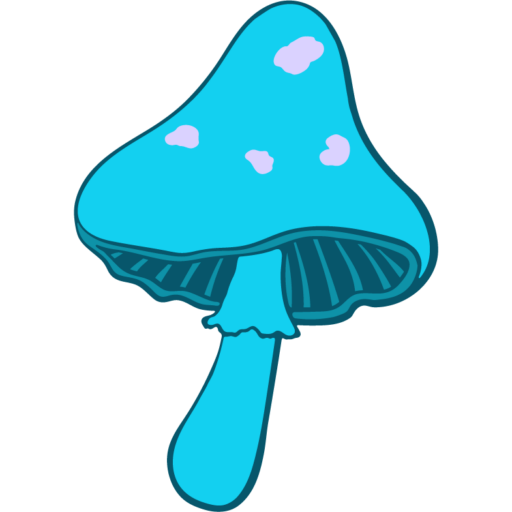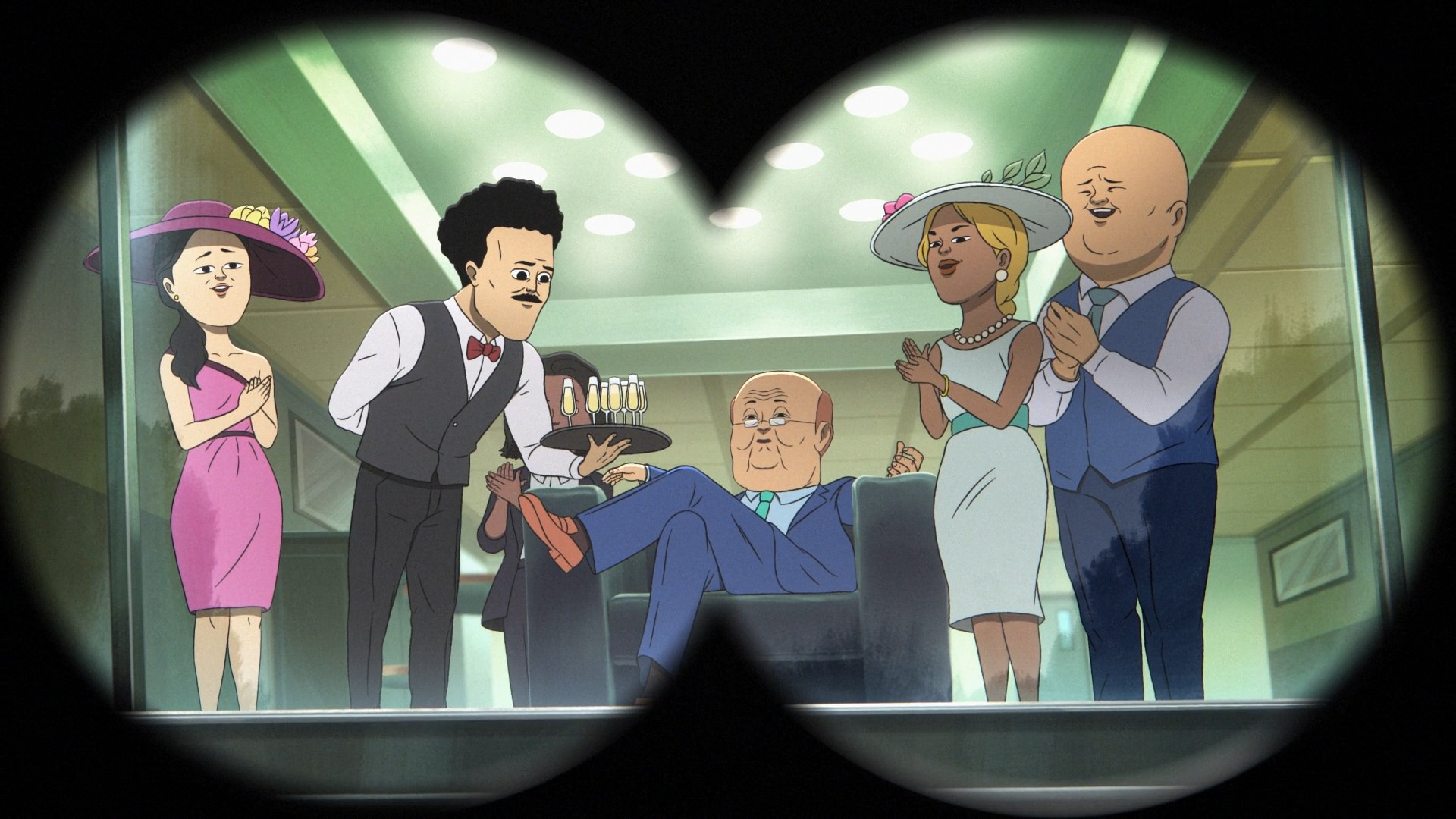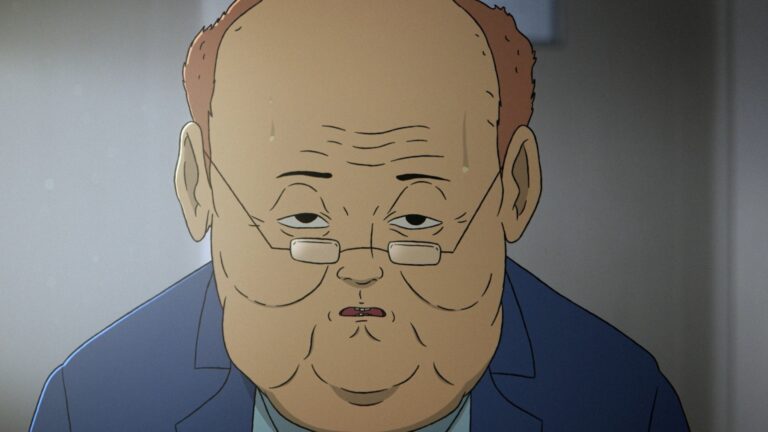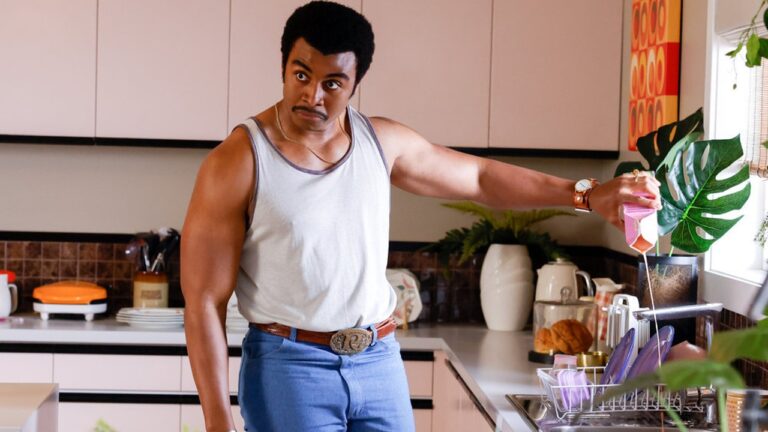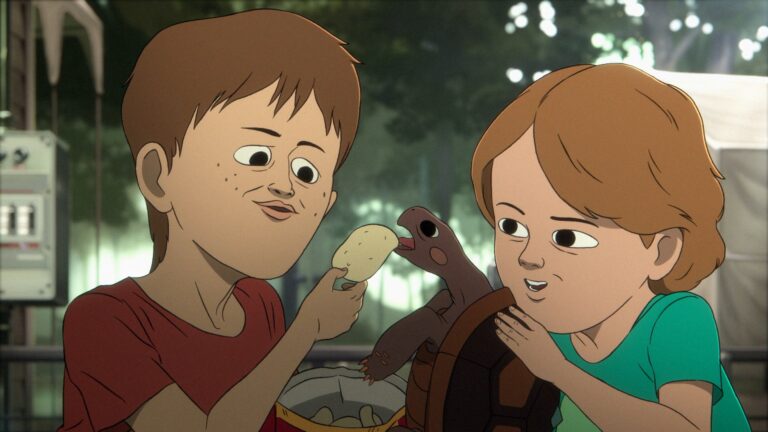Alright, let’s get real. Nobody just looks like that by accident on Common Side Effects. Every character struts onto the screen bursting with the kind of visual nuance you wish you noticed in real life. This show’s art team? Absolute wizards. They don’t just slap some colors together. They build personalities pixel by pixel — from the messy genius of Marshall’s wardrobe to the surgical sharpness of Rick Kruger’s designer suits. Grab a magnifying glass, because we’re diving deep into how our CSE faves (and foes) literally wear who they are.
Marshall Cuso: Your Friendly Neighborhood Mad Scientist
First up, Marshall Cuso. He’s not just fighting corporate evil. He’s also fighting the daily battle of keeping his shirt buttoned and hat upright. Seriously, look at him! Every part of his design yells, “I have important mycology things to do, and you will not stop me.” Co-creator Joseph Bennett has spilled the tea: “We thought about someone who would maybe not be taken so seriously in the science community… He’s a smart guy, and he’s confident, and he doesn’t care.”
- The unbuttoned shirt? That’s a classic move from someone who’s too busy researching weird side effects to care about dress codes.
- His ever-present hat? That’s pure homage to legendary mycologist Paul Stamets.
- Constantly ever-so-slightly disheveled? That’s not laziness — it’s rebellion.
Yet his laidback vibes? Disarming. You’re lulled in, thinking, “Aw, he’s harmless.” Then he saves a town with mushrooms. The art team uses this visual balance to let viewers underestimate him — until he whips out the big scientific guns.
Frances Applewhite: Ambition Meets Inner Turmoil
Right next to Marshall, we’ve got Frances Applewhite. Her vibe? All bottled-up ambition, with a healthy dash of stress. Co-creator Steve Hely described her as someone “who’s just struggling with the everyday.” So of course, her appearance has to walk that tightrope. She’s that person you sit next to on the bus who’s dressed for a board meeting — but whose phone is full of worried texts from home.
- Frances dresses for the job. Blazers, neat slacks, sensible shoes.
- There’s nothing outrageous, but nothing sloppy either — she’s working too hard to be noticed, and too tired to stand out.
- Tiny accessories suggest someone who once cared about self-expression, but now mostly lives in survival mode.
Despite her businesslike gear, there’s a certain softness in her animated eyes. The animators give her small visual pauses — lingering blinks, lingering stares out windows — that channel that exhausted soul underneath. So when Frances kicks into hero mode, suddenly snapping out of her routine, her animation smooths out too. It’s no accident. The team saves those sleeker, braver poses for her moments of doubt-crushing action.
Rick Kruger: Now Entering… Corporate Villainy
Ah, Rick. The CEO you just love to hate. Rick Kruger is every petty, polished boss you’ve ever had, multiplied by a thousand and filtered through maximum smugness. His design? A love letter to corporate domination, with a twist. His look is all about fake perfection:
- Suits so crisp you could break a tooth on them.
- Not a hair out of place, ever.
- That famous Reutical Pharmaceuticals badge, always gleaming.
But this is Common Side Effects, so you know there’s a layer underneath. Rick is obsessed with trivialities; he plays farming simulator video games while his company flounders. His office — sterile, sparkling, soulless — screams money without real power. The animators let his posture sag just a little when no one’s looking, or his fingers fidget on his phone when the big bosses aren’t around. That gap between image and reality? Pure visual poetry.
Copano & Harrington: Buddy Cop, But With Fewer Rules
Now, let’s argue that CSE’s DEA agents Copano and Harrington are truly in a league of their own. Their clothes? Government issue, nothing to write home about. But their actions? Next-level goofy. The animators cut loose here, letting the duo move with an energy that’s closer to a dance crew than federal law enforcement.
- Frequently caught head-bobbing to pop songs inside their car.
- Expressions set to “permanent smirk.”
- They’re synchronized like twins but always slightly off-beat.
And the best part? That visual goofiness hides a real menace. When it’s time to chase down our heroes, those cartoonish moves transform into sharp, sudden bursts of efficiency. Animation shifts from exaggerated to tightly controlled. The transition is so smooth, you feel the threat before you realize what’s changed.
Color: Storytelling’s Secret Weapon
You can’t talk about CSE character design without shouting out art director Camille Bozec and her mastery of color theory. She once said, “We wanted everyone on the couch to feel what Marshall feels – without Marshall ever spilling his guts out loud.” So, instead of long-winded monologues, we get emotional saturation.
Take a second and watch what happens when Marshall enters a scene full of hope or camaraderie:
- Warm golds, earthy greens, that sort of indie-movie glow.
- Light bounces, shadows soften, everything breathes.
Now contrast it with stress city or villainous plotting:
- All at once, it’s stormy blues and grey washes.
- The light hardens, casting everyone in ominous silhouettes.
And it’s not just background art. The same logic bleeds into what characters wear and how their skin tones pop (or fade). When Frances starts feeling trapped, the palette turns staler and colder around her. When Rick’s villainy peaks, his suit and office lights practically radiate corporate chill.
World-Building in a Palette: Where You Work VS. Where You Fight Back
One of the smartest games the animation team plays is “Which World Are We In?” You know it instantly by color and design. Reutical HQ hums along in a wintry cube-farm palette — white-on-silver, soulless, controlled. Super clean, but not inviting.
Meanwhile, every counter-culture hub, hideout, or trippy fieldtrip Marshall stumbles into? All wild oranges, lush greens, and burnt terracotta. These places hum with chaos and creativity.
- Reutical’s world looks sanitized, like a conference room that’s never seen a dropped crumb.
- The rebels’ world? Bustling, mismatched, bursting with plant life and clutter.
As Bozec puts it, “Reutical thinks they’re running a clean operation, but the counter-culture people? They’re messy, alive – that had to come through with color first, not just dialogue.”
Animation In Motion: Faces, Bodies & Secrets
Sure, the clothes and colors do plenty, but the animators don’t stop there. Every character gets their own physical rhythm. Marshall shambles and slouches until inspired — then he snaps upright, energizing the whole scene. Frances’ walk becomes tighter when stressed. Rick’s hands never rest, drumming, fiddling, betraying his inner urgency.
And those eyes! If you re-watch a scene, focus on the blinks and micro-expressions. When a character lies or crumbles under pressure, their face shifts. Nothing cartoonish. Just enough for your subconscious to scream, “Something’s not right!” before the plot confirms it.
Easter Eggs: For The Obsessed, By The Obsessed
Blink and you’ll miss them, but CSE’s animators absolutely packed the backgrounds with fan bait.
- Drawings reference real-world mycologists, right down to little mushroom sketches on whiteboards.
- If you pause during some trippier sequences, you’ll spot psychedelic art nods and hidden symbols plucked from drug culture history.
- Many episodes sneak in tiny mushrooms lurking behind office supplies or nestled in field grass — a sly wink for eagle-eyed mycology nerds.
These details don’t just reward superfans. They create lived-in, layered worlds. It’s not just story. It’s ecosystem.
Digital Magic Meets Old-School Heart
Common Side Effects nails a rare blend. Their animation style is somehow both digital and hand-drawn, fusing lush, experiment-friendly saturated color with painterly gradients. When that mysterious drug hits, the show unleashes full fever-dream mode. Fluid movement, warped backgrounds, and shifting patterns hint that you’ve slipped into a new (and possibly dangerous) brainspace.
- Character outlines blur and pulse during hallucinations.
- Colors become hyper-saturated, then drop out to black and white during moments of scientific discovery or soul-crushing defeat.
- Even sound design complements the animation, warping and echoing to reinforce what you see.
All this, and the story barely slows down for a second.
Why It Works: More Than Just Pretty Pictures
Sometimes, in shows like this, you feel like the animators had all the fun. Here’s the shock: Every single design choice feels deliberate — fired straight into the emotional core of each episode. Marshall’s awkward genius, Frances’s exhausted ambition, Rick’s brittle ego — all of it beams off the screen before you hear a single word of dialogue.
And the best part? You don’t have to be an art historian or a design nerd to feel it. CSE’s artistry sneaks straight through your eyeballs, right into your nervous system.
Stick Around — The Visual Puzzles Aren’t Done Yet
So, next time you watch and a character’s shirt is a little wrinkled, or a curtain glows suspiciously orange, don’t brush it off. That’s a whole conversation, encoded in patterns and pigments. Maybe the plot’s about to zig when you expect a zag. Or maybe — just maybe — the next visual clue will blow the lid off the secrets you never saw coming.
CSE’s animators aren’t just showing. They’re telling. So, if you want to keep up, trust your eyes as much as your ears. There’s plenty more hiding in plain sight.
